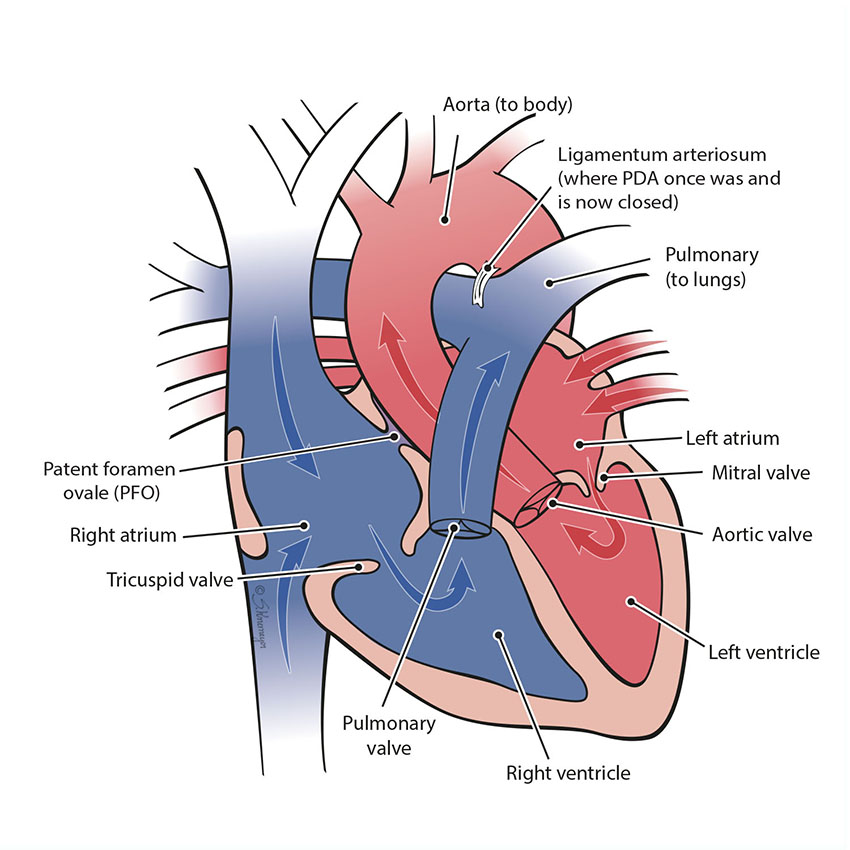Heart Anatomy
Function of the Normal Heart After Birth
In a normal heart, there are four chambers and four valves. The top chambers are called atria and the bottom chambers are called ventricles.

Atria
The atria are two “collecting” chambers, each called an atrium. The atria collect blood going back to the heart from the lungs or body by way of veins.
Ventricles
The ventricles are the “pumping” chambers. The ventricles are muscle chambers that pump blood out to the body or the lungs by way of the great arteries.
Right Heart
The right heart is the right atrium and right ventricle. Its job is to collect blood that is low in oxygen and pump it to the lungs. The lungs will give the blood oxygen (oxygenate) again.
Left Heart
The left heart is the left atrium and left ventricle. Its job is to collect blood from the lungs that is high in oxygen, and pump it out to the body. The body uses the oxygenated blood to work the muscles, brain, and other organs.
Valves
There are 4 valves inside the heart that separate the chambers. These valves are one-way “doors” in the heart. These valves open and shut between the atria and ventricles and between the ventricles and great arteries. The valves push blood forward and keep it from moving backward.
Patent Ductus Arteriosus
All infants are born with a patent ductus arteriosus (PDA). A PDA is a special fetal blood vessel that sends blood from the mother’s placenta directly to the baby’s body, past the fetal lungs. In babies with a normal heart, the PDA begins to close within a few days after birth because it is no longer needed. However, babies with single ventricle heart defects need the PDA to stay open for blood flow.
Single Ventricle Conditions
If either side of the heart does not grow the right way, these basic functions do not work. There are two kinds of single ventricle heart problems (conditions). Single right ventricle conditions are when the baby only has a right ventricle. Single left ventricle conditions are when a baby only has a left ventricle. Children that are born with single ventricle heart defects are all unique and require surgeries to live. These conditions are lifelong problems. The specific surgeries your baby will need will be determined after birth based on their individual heart problems. The surgeries allow for balancing the blood flow so the baby can grow and develop but these surgeries are not able to correct or replace the chambers that are too small.
The most common type of single ventricle heart defect is hypoplastic left heart syndrome (HLHS). The overall survival rate with surgery for HLHS is 75-80%. Even with the best medicines and surgeries, heart failure and other problems can develop and cause death. With heart failure, a heart transplant may be needed, even during childhood.
